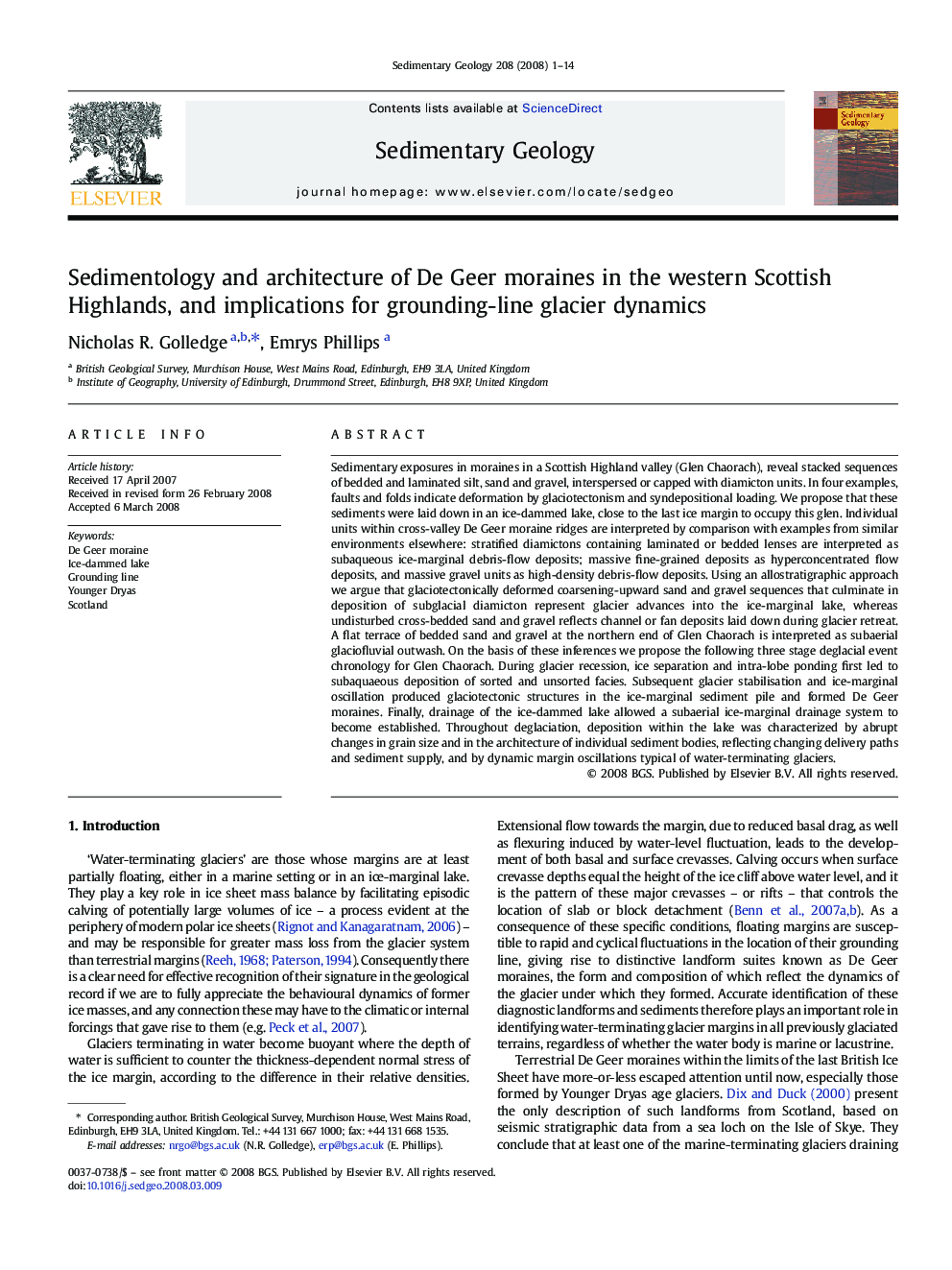| کد مقاله | کد نشریه | سال انتشار | مقاله انگلیسی | نسخه تمام متن |
|---|---|---|---|---|
| 4690549 | 1636153 | 2008 | 14 صفحه PDF | دانلود رایگان |

Sedimentary exposures in moraines in a Scottish Highland valley (Glen Chaorach), reveal stacked sequences of bedded and laminated silt, sand and gravel, interspersed or capped with diamicton units. In four examples, faults and folds indicate deformation by glaciotectonism and syndepositional loading. We propose that these sediments were laid down in an ice-dammed lake, close to the last ice margin to occupy this glen. Individual units within cross-valley De Geer moraine ridges are interpreted by comparison with examples from similar environments elsewhere: stratified diamictons containing laminated or bedded lenses are interpreted as subaqueous ice-marginal debris-flow deposits; massive fine-grained deposits as hyperconcentrated flow deposits, and massive gravel units as high-density debris-flow deposits. Using an allostratigraphic approach we argue that glaciotectonically deformed coarsening-upward sand and gravel sequences that culminate in deposition of subglacial diamicton represent glacier advances into the ice-marginal lake, whereas undisturbed cross-bedded sand and gravel reflects channel or fan deposits laid down during glacier retreat. A flat terrace of bedded sand and gravel at the northern end of Glen Chaorach is interpreted as subaerial glaciofluvial outwash. On the basis of these inferences we propose the following three stage deglacial event chronology for Glen Chaorach. During glacier recession, ice separation and intra-lobe ponding first led to subaquaeous deposition of sorted and unsorted facies. Subsequent glacier stabilisation and ice-marginal oscillation produced glaciotectonic structures in the ice-marginal sediment pile and formed De Geer moraines. Finally, drainage of the ice-dammed lake allowed a subaerial ice-marginal drainage system to become established. Throughout deglaciation, deposition within the lake was characterized by abrupt changes in grain size and in the architecture of individual sediment bodies, reflecting changing delivery paths and sediment supply, and by dynamic margin oscillations typical of water-terminating glaciers.
Journal: Sedimentary Geology - Volume 208, Issues 1–2, 20 July 2008, Pages 1–14